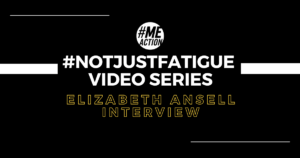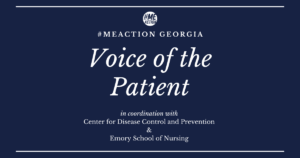At the NIH tele-briefing on Tuesday, March 8th, Dr Walter Koroshetz, Director of NINDS set out the NIH’s strategy for tackling ME/CFS.
He said it won’t be an easy task ‘else it would have been solved long ago’, and it wasn’t clear where the solution will come from. The NIH’s focus will be on attracting an army of the best and brightest researchers from many different areas of science.
As Director Francis Collins put it, the NIH was “serious about looking for opportunities to expand research and recruit new investigators, with new eyes and brains.”
Koroshetz acknowledged that funding is nowhere near what’s needed given the burden of ME/CFS and the NIH wants to change that. Koroshetz is chair of the trans-NIH working group of 23 institutes and centers that is working on a plan to transform ME/CFS research at the NIH.
He said that currently ME/CFS is losing out mainly because the NIH uses a ‘tried and true’ competitive peer review system that aims to fund the best research proposals, regardless of which disease they cover.
“NIH starts to pay the ones that are seen to be the most highly meritorious and go down the list until we run out of money”.
There currently aren’t many good research proposals for ME/CFS compared with other illnesses, and ME/CFS is losing out in the competition.
Koroshetz said what’s needed in ME/CFS are NIH funds to fertilize the research and get it going. They are planning to get a “large number of highly motivated and well-trained investigators” into ME/CFS research in a relatively short time. This should drive up the number of high quality applications to compete ‘in a fair way’ with other disorders.
Critically, he added that the NIH needed to stimulate this process with cash. In reply to a question from Jennifer Spotila, Koroshetz said he couldn’t yet commit to earmarking a pile of cash for ME/CFS (using a mechanism the NIH calls “Requests for applications”, or RFAs), because that needs to be approved within the NIH first. But getting RFAs for ME/CFS is his goal, and he said they were working very hard towards getting approval within the NIH around May.
The hope is that such earmarked funding will help hook investigators at universities and clinics around the country, and that groups will form to submit applications. The applications will show that funding ME/CFS is clearly incredibly important and that it will take high level science to get to the bottom of the problem.
THE FIRST HORSE OUT OF THE GATE
Koroshetz explained that about 90% of NIH funding goes as grants to outside researchers. But the remaining 10% of the NIH’s budget goes to intramural (in-house) studies – and its Clincal Center in Bethesda is the world’s largest research hospital. This is where the first NIH ME/CFS study will take place, as “the first horse out of the gate”.
The NIH often does this, looking at small numbers of patients in great detail, to help give clues about where future research should be heading. It’s just the beginning of what is likely to be a long journey but both Koroshetz and Collins stressed the NIH’s commitment to ME/CFS.
Koroshetz concluded by saying:
We have to utilize NIH resources as best we can for the long term and I think we can do that but we cannot do it alone and we need to do it with the patients and the advocacy groups together working hand-in-hand to try and fight this illness.






7 thoughts on “NIH: Solving ME/CFS will need “an army of really good researchers working together””
It would have been solved long ago because of it’s complexity! While it is true that it’s complexity is baffling I tend to think the neglect, lack of care, labelling as a somatoform illness, the influence of PACE and misappropriation of funds has been the biggest bar!
I agree with the above statement, but whats done is done. Its time to prove that they are serious about this illness and I guess we as a community have to try to give them the benefit of the doubt (which is asking alot from people who have suffered with this illness for years. All I can say is , please try to make this happen. Please don’t let us down Again!)
Yes, neglect from the NIH in the past has surely held back research. But this is a new start, and a lot of technology that simply didn’t exist years back will now be applied to tackling mecfs. Hopefully that means that commitment and funding now will lead to rapid progress (though I suspect mecfs will still be a tough nut to crack).
What if the Australian NCNED centre is correct and there are cracks in the ME/CFS armour? If they are correct, we already have biomarkers that can be used to screen people for ME/CFS/SEID?
Is the NIH validating/challenging these claims?
I think until the Australians put out some peer-reviewed research on that, with validation in an independent group, it wouldnt’ be fair to expect the NIH to pursue it. As Koroshetz pointed out, this field has rather a lot of unreplicated biomaker claims. There must be a hundred similar biomarker claims out there.
“NIH starts to pay the ones that are seen to be the most highly meritorious and go down the list until we run out of money”
The problem is that the people on deciding committee for grants are wholly unqualified to make decisions on assigning grants because they don’t understand CFS at all. The grant system is biased if even one person on the panel doesn’t understand the disease. This is proven in the fact grants get approved that are psychological based. SolveCFS has spoken about this systemic problem in the past.
We must push for a grant panel of “actual” CFS experts not NIH assumed ones to get a chance at getting good grant proposals approved.
I agree that somee peer review of the grants to date looks to be questionable. Ian Lipkin said he raised concerns over the competence of reviewers with Francis Collins, and Ron Davis was similarly unimpressed (both get a lot of NIH grants) But the basic point, that the NIH gets an awful lot more high quality proposals for illnesses such as MS is sound – because currently there just aren’t enough researchers working in this field.
Hopefullly some RFAs will make a big difference in kickstarting this. It’s earmarked funds for mecfs. If the peer reviewers decide none of the proposals are worth funding, that could lead to a lot of interesting scrutiny of the process. An RFA is also a strong message to those within the NIH, and those on its review committees, that mecfs is an important field they can’t dismiss.
Comments are closed.